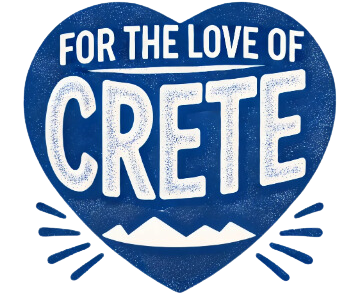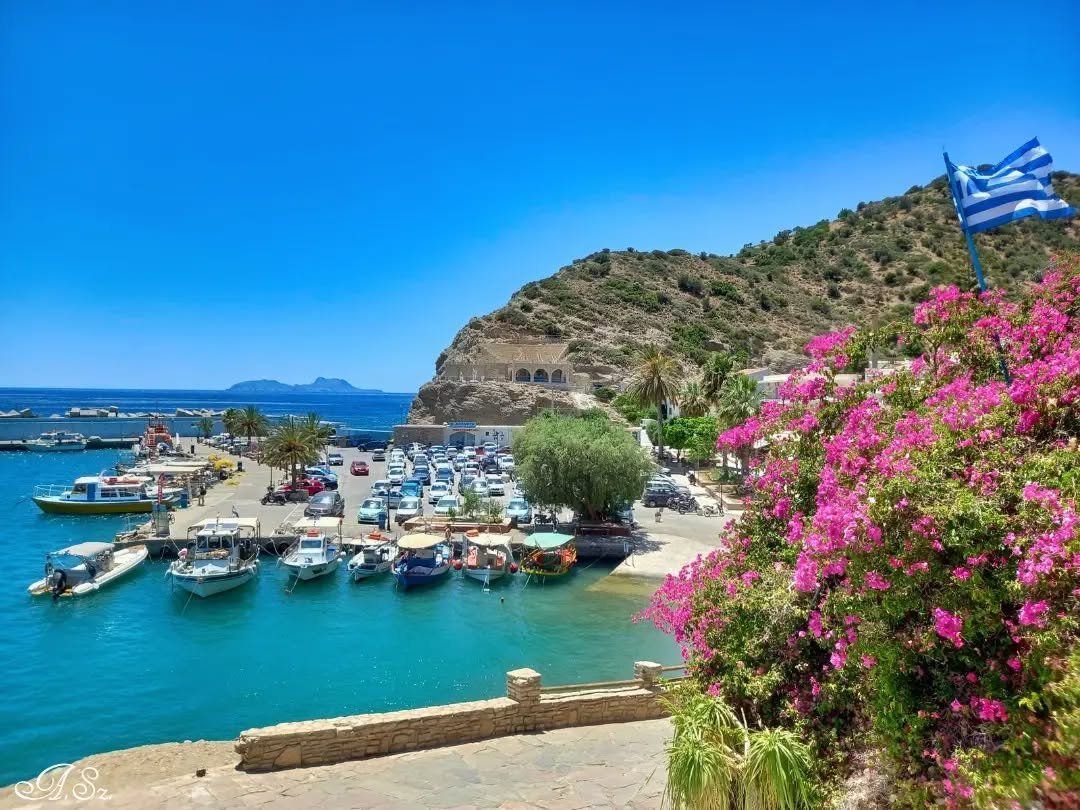Crete isn’t just another dot on the Mediterranean map—it’s Greece’s largest island where every road tells a story. From coastal highways hugging turquoise waters to mountain passes winding through olive groves, Crete offers an unmatched diversity of landscapes perfect for road trip enthusiasts. Whether you’re drawn to ancient Minoan ruins, secluded beaches with pink sand, or traditional mountain villages where time stands still, exploring this island on four wheels gives you the freedom to discover its magic at your own pace. These seven spectacular routes showcase the very best of Crete’s natural wonders, cultural treasures, and hidden gems that most tourists never get to experience. Grab your sunscreen and driving playlist—let’s hit the road!
1. Chania to Elafonissi Beach (Southwest Coast)
The journey from Chania to Elafonissi Beach delivers one of Crete’s most rewarding coastal adventures. What looks straightforward on a map unfolds as a spectacular drive through dramatic landscapes, ancient legends, and ultimately one of the Mediterranean’s most stunning beaches.
Highlights Along the Way
Near the village of Topolia, you’ll find your first breathtaking landmark. The impressive Topolia Gorge stretches for about 1.5-3 km alongside the road, featuring steep cliffs and rare endemic plants. While the gorge itself is a hiking destination rather than a drivable route, the road travels nearby offering glimpses of this dramatic landscape steeped in local mythology about dancing fairies and the Minoan goddess Vritomartis.
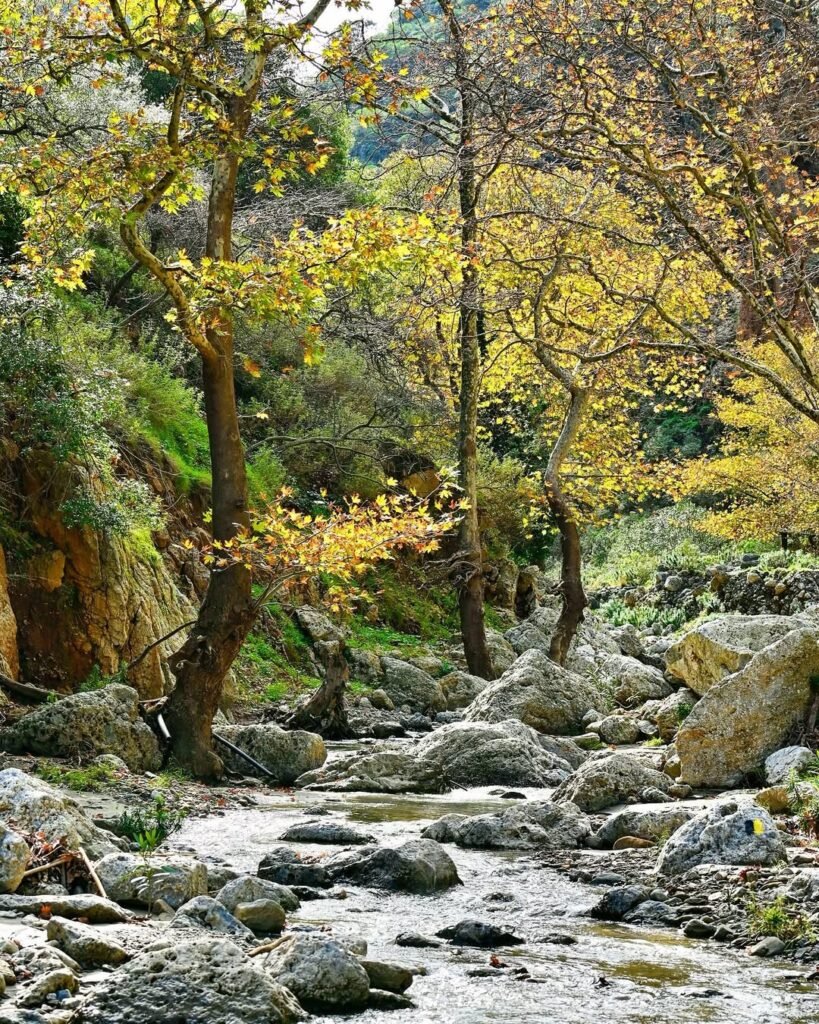
Agia Sofia Cave deserves a short detour from the main road near the start of Topolia Gorge. This impressive cave features stunning stalactites and stalagmites surrounding a small Byzantine church. Archaeological discoveries here date back to Neolithic times, and it’s home to the Pholcus creticus spider—a rare species found nowhere else on Earth.
Before reaching your final destination, the charming village of Elos offers the perfect lunch stop. The well-known taverna “Kastanofolia” serves exceptional authentic Cretan cuisine under shade-giving plane trees. If you happen to visit in October, you might catch the village’s famous chestnut festival.
Elafonissi Beach: Where Dreams Meet Reality
Elafonissi Beach rewards your drive with what many consider Crete’s most magical shoreline. The beach’s famous pink sand—created from microscopic red organisms mixed with white sand—creates a subtle but stunning contrast against crystal-clear turquoise lagoons, especially visible along the waterline. Part of a protected Natura 2000 reserve, this natural wonder hosts unique flora including the endangered Phoenix theofrasti palm tree.
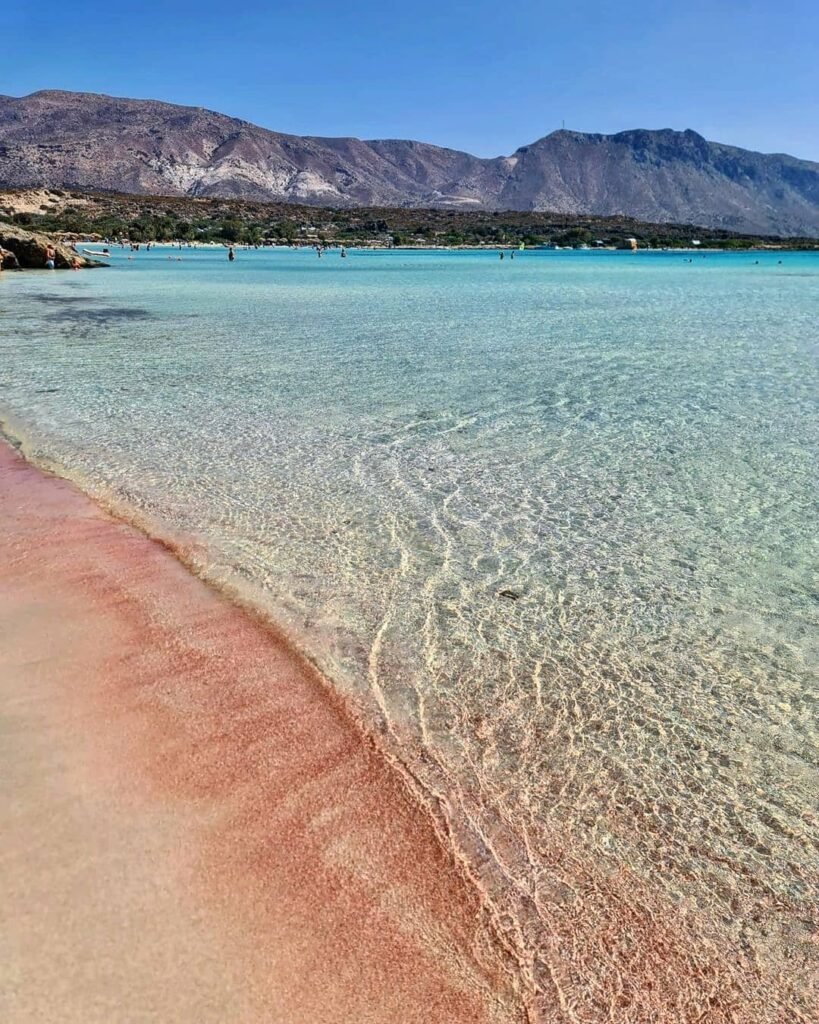
For those seeking serenity, wade through the shallow waters to reach Elafonissi Island, where quieter coves offer more seclusion and untouched beauty.
Local Tips
- Don’t miss Chrysoskalitissa Monastery, located about 6 km from Elafonissi, for stunning views and a peaceful atmosphere
- Visit Kedrodasos Beach just 1 km east of Elafonissi for a less crowded experience with similar beauty and welcome shade from juniper trees
- Arrive early to secure parking (€3-5) and avoid the crowds that can reach 5,000 visitors daily in peak season
Where to Eat
Taverna Kalomirakis Family (Elafonissi) Perfect for post-beach relaxation, this family-run taverna offers stunning views, fresh seafood (try the grilled octopus), and authentic Cretan specialties like zucchini balls. Don’t be surprised when complimentary raki and dessert arrive at your table!
Topos & Elia (Topolia) Break your journey at this traditional taverna near Topolia Gorge, where authentic Cretan dishes get a modern twist. The lamb stew and homemade pies receive particular praise from visitors.
Driving Time: Approximately 1.5–2 hours one way
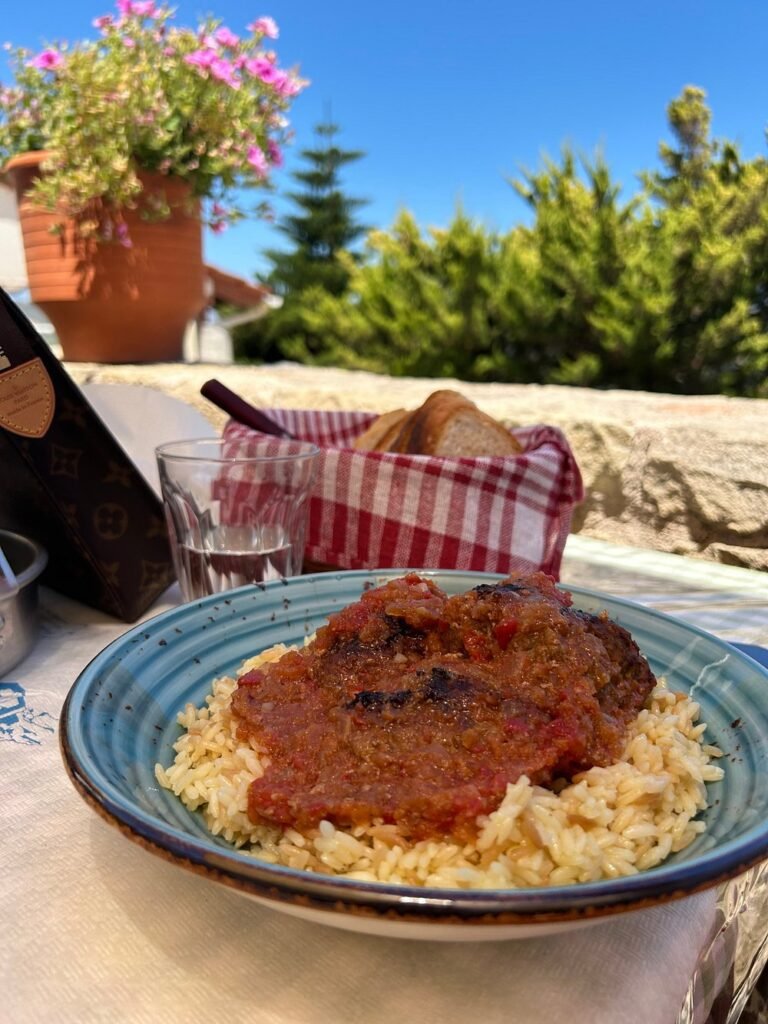
2. Heraklion to Matala (South-Central Crete)
The journey from Heraklion to Matala takes you through South-Central Crete’s most fascinating historical sites, culminating in a beach town where ancient history meets 1960s counterculture in spectacular fashion.
Highlights Along the Way
Phaistos: A Window into Minoan Civilization reveals one of Crete’s most significant archaeological treasures. Perched on a hill overlooking the fertile Messara Plain, this ancient palace complex offers breathtaking views of Mount Psiloritis. As you walk through expansive courtyards and marvel at remnants of Bronze Age architecture, you’re exploring a site thought to be the home of Rhadamanthys in Greek mythology. Destroyed and rebuilt multiple times throughout history, the palace’s historical significance ranks second only to Knossos, making it a must-see for history enthusiasts.
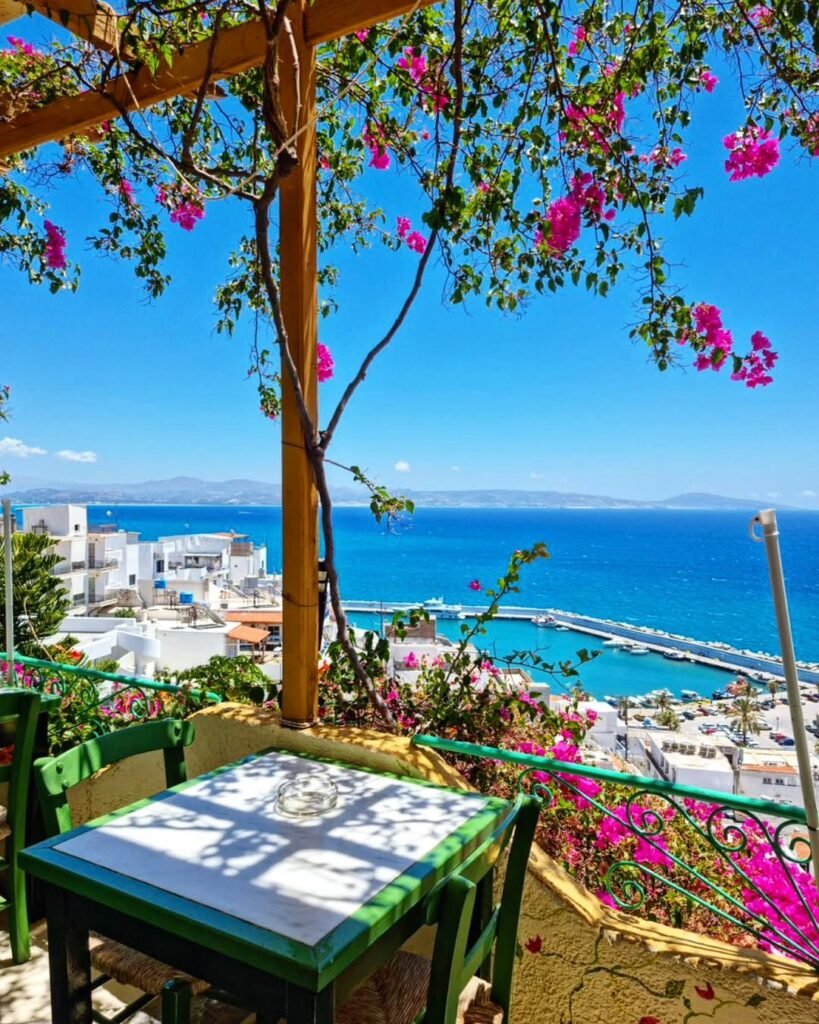
The charming fishing village of Agia Galini provides the perfect mid-journey break. Pause at a seaside café to enjoy Greek coffee while watching fishing boats bob gently in the harbor. Look for the statues of Daedalus and Icarus near the port, commemorating the mythological tale of their daring escape from King Minos. The village’s relaxed atmosphere and stunning coastal views make it an ideal spot to recharge.
Matala Beach and Hippie Caves
Matala’s unique character comes from its perfect blend of ancient history and bohemian spirit. The town’s claim to fame are the Matala Caves – ancient chambers carved into golden sandstone cliffs. These caves served primarily as Roman tombs, though some speculate about earlier uses. They gained worldwide fame in the 1960s when they became home to a hippie community that included singer-songwriter Joni Mitchell, who immortalized her time here in the song “Carey.” Local lore suggests other famous musicians may have visited, though these accounts are largely anecdotal.
The beach itself offers golden sands and crystal-clear waters framed by dramatic cliffs. After exploring the caves (entrance fee €4, reduced €2), relax on the shore or dive into the refreshing Libyan Sea. The town’s colorful streets, adorned with vibrant murals and bohemian shops, maintain the free-spirited atmosphere that made Matala famous decades ago.
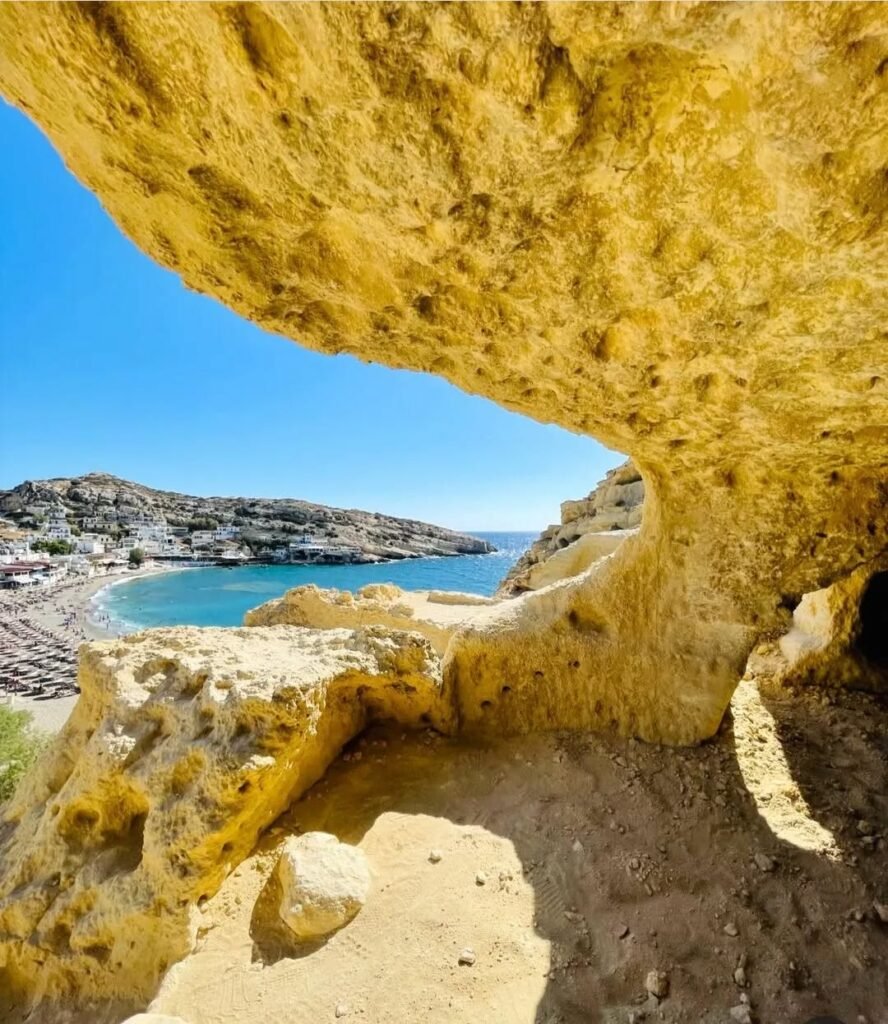
Local Tips
- Check dates for the Matala Beach Festival (typically held in June, but in 2024 scheduled for July 5-7) to experience live music and art in the spirit of the town’s hippie heritage
- Stay for sunset when the caves and cliffs glow golden against the darkening sky
- Keep an eye out for impromptu traditional Cretan dance performances in the village square
Where to Eat
George’s Yard (Matala) This charming taverna near the caves offers authentic Cretan cuisine in a rustic setting. Don’t miss their beef stifado and fava with capers, served with genuine local hospitality.
SCALA Fish Bar Restaurant (Matala) Perfect for seafood lovers, SCALA serves exceptional grilled squid and prawn pasta with stunning views of Matala Bay. Time your meal for sunset for an unforgettable dining experience.
Driving Time: Around 1-2 hours one way, depending on traffic and stops

3. Rethymno to Preveli Beach (South Coast)
The route from Rethymno to Preveli Beach combines mountain charm, historical significance, and one of Crete’s most unique natural wonders—a place where river, palms, and sea come together in stunning harmony.
Highlights Along the Way
Spili: The Village of Lion-Head Fountains offers your first memorable stop. Nestled at 430 meters in the foothills between the Lefka Ori (White Mountains) and Mount Psiloritis, this charming village is famous for its Venetian fountain “Kefalovrissi” with 25 intricately carved lion heads (though some sources mention 19). These spouts pour crystal-clear mountain water year-round at a constant refreshing 13°C—perfect for filling your water bottle with some of Crete’s purest spring water. As you wander Spili’s cobbled streets, you’ll find inviting cafés and tavernas shaded by ancient plane trees, creating an atmosphere that feels worlds away from coastal resorts.
Continuing your journey, Preveli Monastery commands a dramatic position approximately 170 meters above the Libyan Sea. This historic sanctuary dates back to the 16th-17th century and played crucial roles during both Ottoman rule and Nazi occupation, when it sheltered Allied soldiers. Beyond its historical significance, the monastery rewards visitors with spectacular panoramic views from its stone-paved terraces. Take time to explore its peaceful courtyards and small museum of religious artifacts before heading to your final destination.

Preveli Beach: Where River Meets Sea
Preveli Beach stands as one of Crete’s most magical landscapes. What makes this beach truly special is the Palm Forest and River that create an almost tropical oasis. Here, the Megas Potamos (Great River) carves through a lush grove of endemic Phoenix theophrasti palms before emptying into the Libyan Sea. The contrast between the cool, freshwater river and warm seawater creates a uniquely refreshing swimming experience.
The beach itself features soft golden sand surrounded by impressive cliffs. After a 15-20 minute descent from the parking area (moderately challenging due to the incline), you’re rewarded with a scene that feels transported from a distant tropical paradise. Swim in the sea, cool off in the river’s natural pools, or explore upstream where you’ll find quieter spots away from the main beach area.
Local Tips
- Beat the climb by taking a boat from nearby Damnoni Beach (€11/adult, though check current prices) if you’d prefer to skip the steep path down to Preveli
- Bring water shoes for exploring the river—they’ll protect your feet from rocks while wading
- Visit in the morning or late afternoon to avoid both the midday heat and largest crowds
Where to Eat
Gefyra Taverna Café (Near Preveli Monastery) Just a short drive from the beach, this taverna serves excellent grilled lamb chops and fresh salads with peaceful views of the surrounding hills. The perfect spot to refuel after your beach adventure.
Petrokofino (Spili) Make time for a meal in Spili at this authentic taverna, where slow-cooked lamb and stuffed vegetables shine. The outdoor seating under plane trees creates a magical setting for experiencing true Cretan cuisine.
Driving Time: About 40 minutes to 1 hour one way
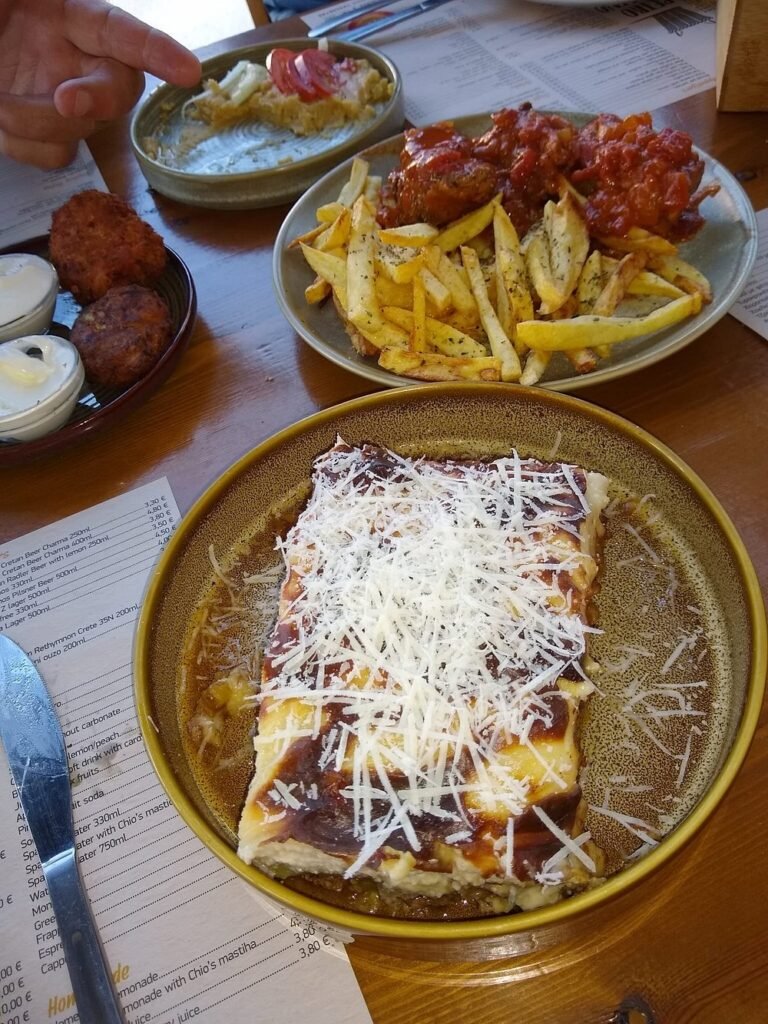
4. Chania to Balos Lagoon via Kissamos (Northwest Coast)
Beyond the charming streets of Chania lies one of Crete’s most spectacular natural wonders—the otherworldly Balos Lagoon with its striking turquoise waters, white sand beaches, and pink-tinged shores.
Highlights Along the Way
The journey begins with a coastal drive to Kissamos, a pleasant town about 40 kilometers west of Chania. This initial stretch winds through the picturesque Cretan countryside, where olive groves blanket rolling hills and mountains form a dramatic backdrop. From Kissamos, continue to the small village of Kaliviani, marking the gateway to your Balos adventure.
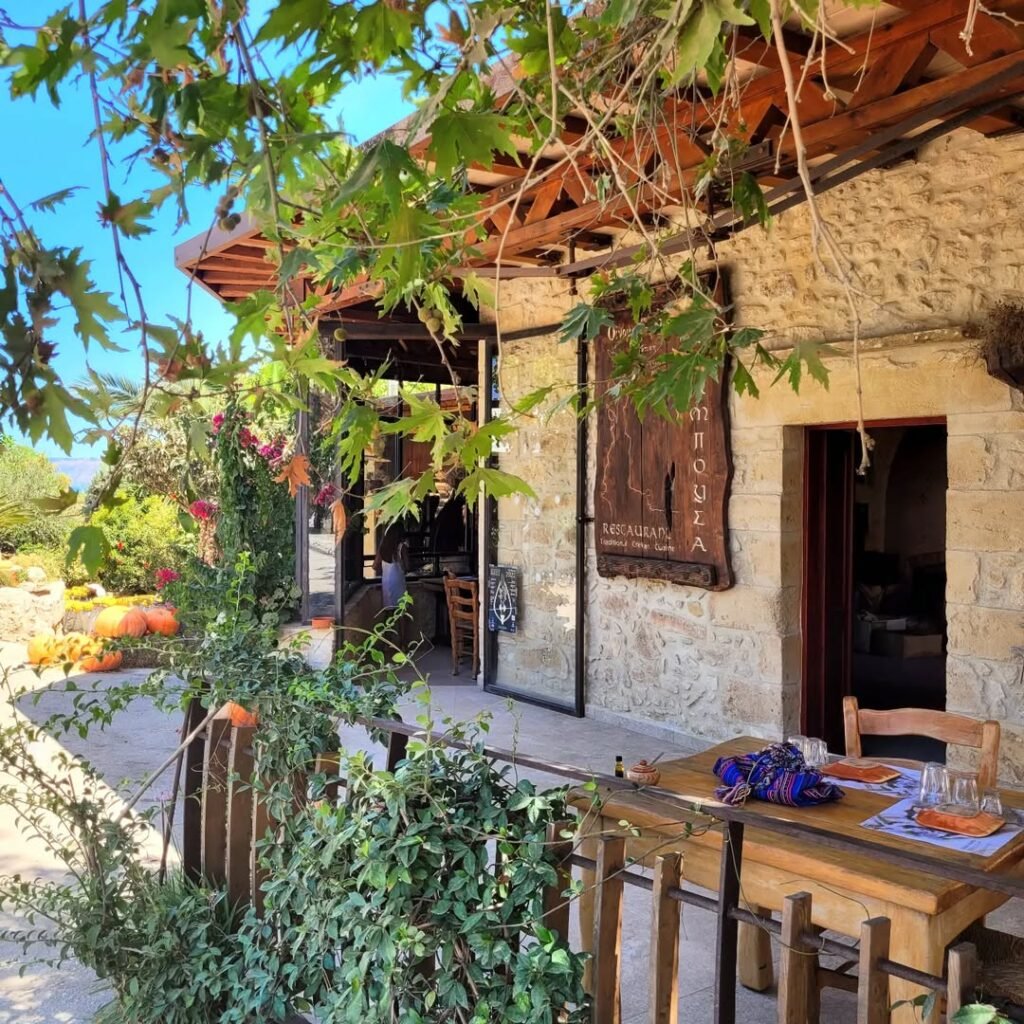
Here’s where the real expedition begins—the challenging off-road path to Balos. After Kaliviani, you’ll navigate a 7.4-kilometer dirt road cutting across the wild Gramvousa Peninsula. This bumpy track offers breathtaking panoramic views but demands careful driving around sharp rocks, occasional potholes, and sleepy goats lounging by the roadside. While some travelers attempt this in standard cars, a 4×4 vehicle is strongly recommended—many rental agreements explicitly restrict driving on this road, and insurance may not cover incidents if driven in a non-permitted vehicle.
Balos Lagoon: A Natural Masterpiece
The reward for your off-road adventure is one of Crete’s most photographed landscapes. From the parking area, a 30-40 minute hike down a marked trail (approximately 1.2 km with 157 meters elevation loss) brings you to the famous viewpoint overlooking Balos Lagoon—a sight that justifies every bump in the road. Below, you’ll see a perfect natural composition: shallow turquoise waters swirling between white sand beaches, with Gramvousa Island rising dramatically in the distance.
The lagoon itself deserves its reputation as a paradise. Part of a protected Natura 2000 reserve, Balos features shallow, warm waters perfect for relaxing swims. The unique pink tint in some sections of sand comes from microscopic Foraminifera and crushed shells, creating an otherworldly beach experience. This ecological haven hosts some 400 plant species and rare wildlife including peregrine falcons, Mediterranean seals, and Caretta-Caretta turtles.
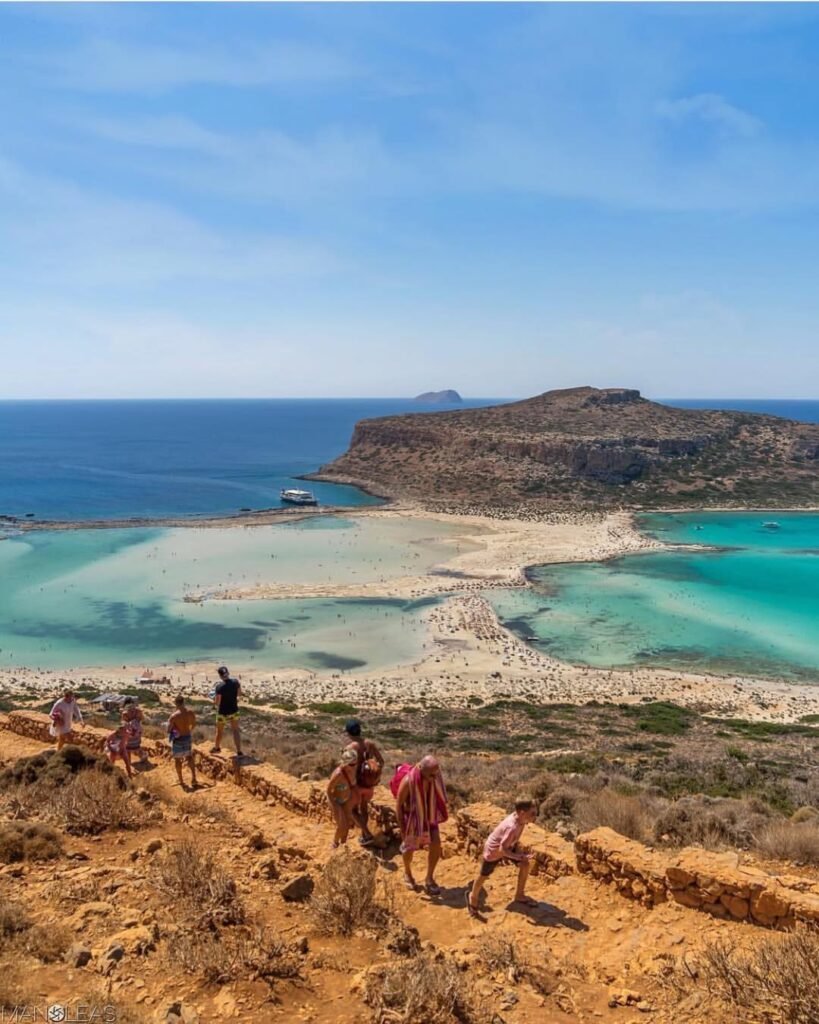
Local Tips
- Consider the ferry from Kissamos port instead of driving—these 3-hour cruises include a stop at Gramvousa Island with its 1584 Venetian castle and offer beautiful views approaching the lagoon from the sea
- Arrive early (before 10 AM) or late (after 4 PM) to experience Balos with fewer crowds and secure parking near the trailhead
- Bring sturdy shoes (not flip-flops) for the rocky, sun-exposed trail, plus water, snacks, and sun protection, as there are limited facilities
Where to Eat
Gramvousa Restaurant (Kaliviani) This fine-dining spot near the start of the dirt road offers traditional Cretan dishes with spectacular sea views. Their lamb tsigariasto and dakos salad showcase the best of local cuisine.
Stelios & Katina (Kissamos) This hidden gem serves some of the freshest seafood in the area. Try their grilled sardines or octopus salad for an authentic taste of Cretan coastal cuisine.
Driving Time: 1-1.5 hours to Kissamos; additional 30-40 minutes on the off-road section (up to 1.5 hours during peak season)
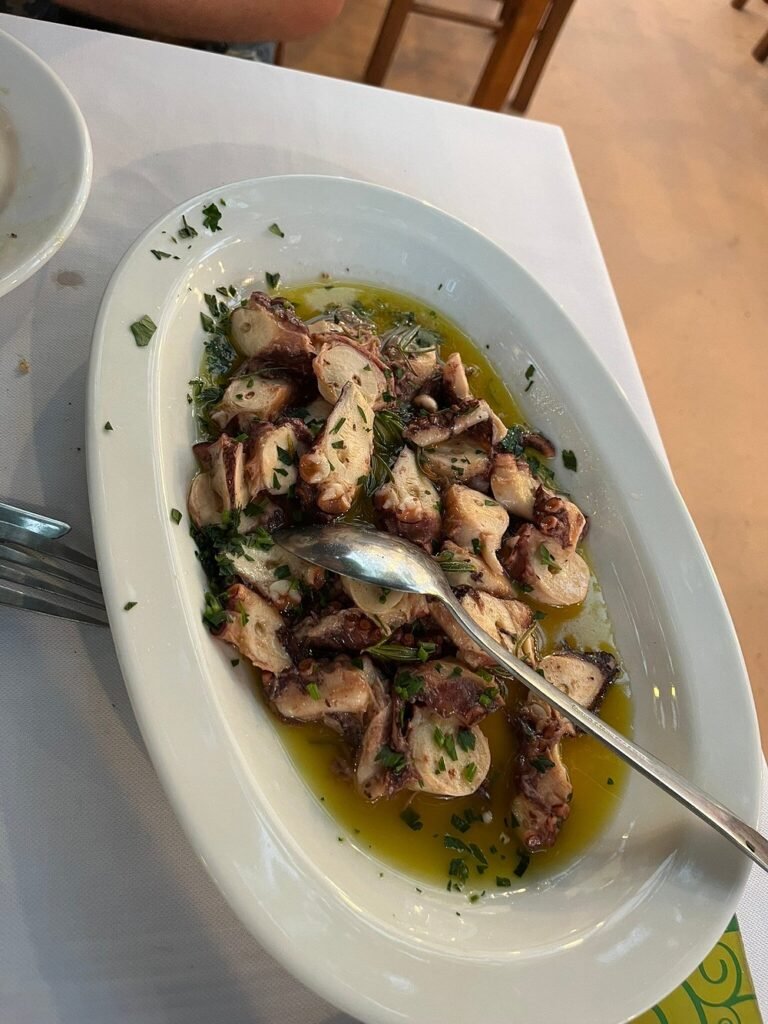
5. Heraklion to Lassithi Plateau (Eastern Crete)
As you wind your way up from bustling Heraklion, the Lassithi Plateau unfolds like a hidden treasure chest in eastern Crete’s mountainous heart—a fertile expanse cradled by the imposing Dikti Mountains and dotted with picturesque villages frozen in time.
Highlights Along the Way
The journey to Lassithi Plateau is a spectacular experience in itself. As you ascend the winding mountain roads, each turn reveals increasingly breathtaking vistas of Crete’s diverse landscapes. Make a worthwhile stop at the historic Kera Kardiotissa Monastery, located about 50 km southeast of Heraklion in the Dikti Mountains, before reaching this remarkable plateau that sits over 800 meters above sea level. Once dominated by thousands of white-sailed windmills pumping water across the fertile plain, today this area offers a perfect blend of natural beauty and cultural experiences.
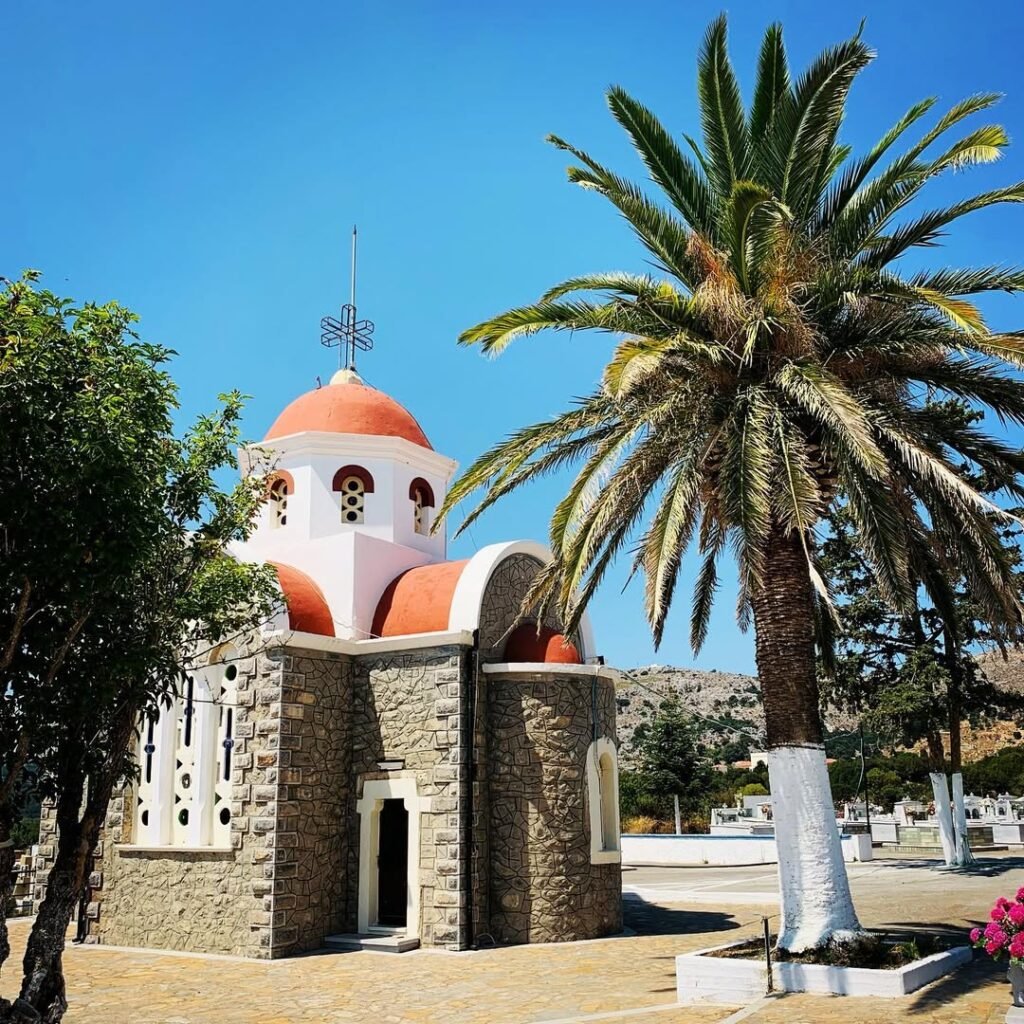
Tzermiado Village serves as the plateau’s main settlement and provides an authentic glimpse into traditional Cretan life. Wander through stone-paved alleys lined with Venetian-influenced architecture and flower-filled courtyards that burst with color. The village makes an ideal base for exploring the plateau and sampling local cuisine—look for tavernas serving antikristo (slow-roasted lamb) and handmade pies using ingredients sourced directly from surrounding farms.
Local Treasures of the Plateau
Lasinthos Eco Park offers one of the plateau’s most enriching experiences. This living museum of Cretan traditions invites visitors to try their hand at pottery-making, weaving, or other traditional crafts under the guidance of local artisans. Children and adults alike enjoy meeting the farm animals and learning about sustainable agriculture practices that have sustained this region for centuries.
For nature enthusiasts, the nearby Katharo Plateau presents a less-visited alternative with lush greenery and dramatic mountain backdrops. Hiking trails crisscross the area, including portions of the E4 European path that leads to Karfi Peak with its sweeping panoramas of the entire plateau. Birdwatchers will appreciate the diverse avian species that make their home in this tranquil ecosystem.
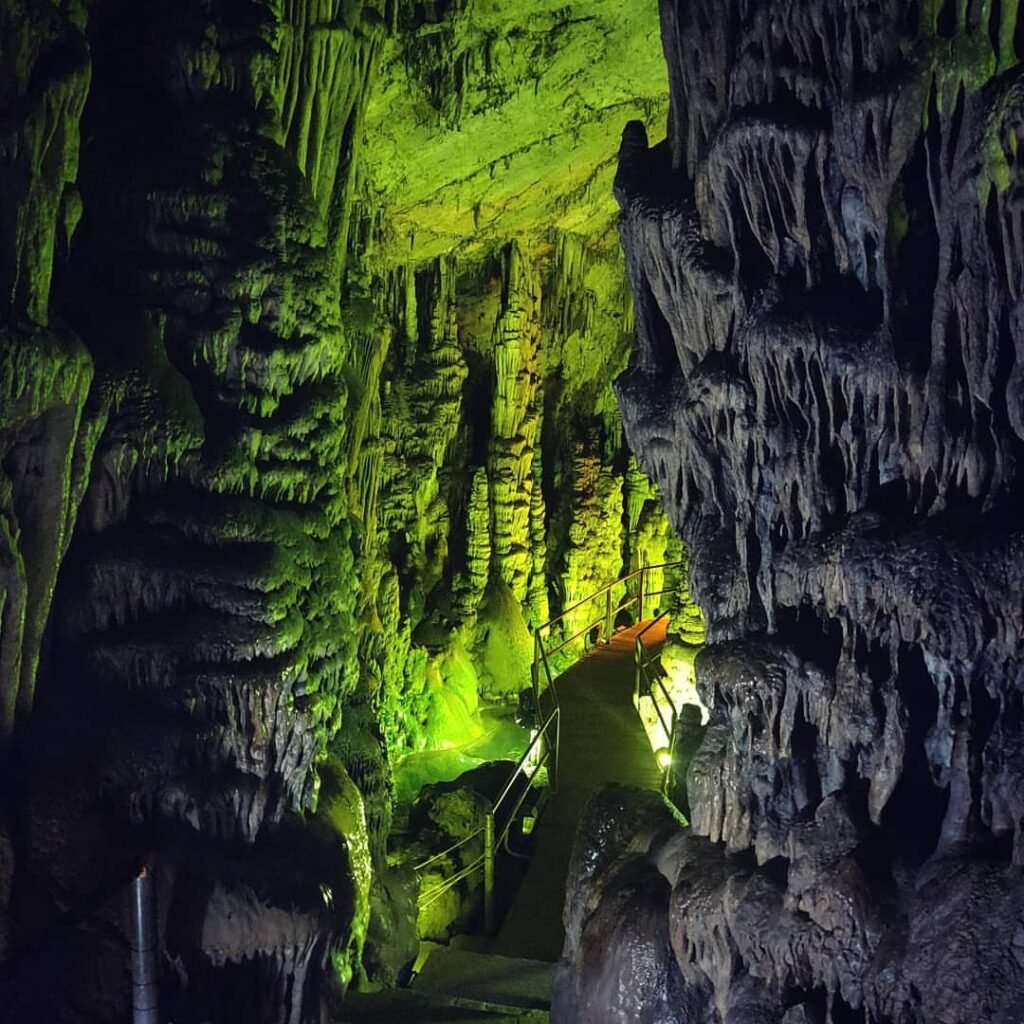
Don’t miss the famous Dikteon Cave (also known as Psychro Cave), traditionally considered the birthplace of Zeus according to Greek mythology. This important archaeological and mythological site features impressive stalactites, stalagmites, and ancient inscriptions—a testament to the area’s historical significance dating back to Neolithic and Minoan times. (Note: The cave is expected to be closed throughout 2025 for extensive refurbishment works. Read more about the Dikteon Cave and alternative mythological sites to visit during its closure here.)
Local Tips
- Visit in spring (April-May) when the plateau transforms into a carpet of wildflowers and fruit trees bloom
- Look for the windmills that once numbered over 10,000 across the plateau—a few well-preserved examples remain as iconic landmarks
- Bring a light jacket even in summer, as the high altitude keeps temperatures cooler than coastal areas
Where to Eat
Taverna Cafe Kronio (Tzermiado Village) Experience authentic plateau cuisine at this highly-rated family-run establishment, renowned for its warm hospitality and traditional Greek dishes. Guests rave about the hearty offerings such as lamb with wild greens gathered from the surrounding mountains, as well as a variety of Greek meze and local specialties. The restaurant’s cozy atmosphere and locally sourced ingredients create a dining experience that feels genuinely connected to the land and local culture. With a menu that includes vegetarian and vegan options, and the ability to accommodate reservations, Taverna Cafe Kronio is a must-visit spot for an authentic taste of Crete’s mountain cuisine.

Lasinthos Eco Park Restaurant Farm-to-table dining at its most authentic, featuring organic produce grown just steps from your table. Their goat cheese salad showcases local dairy traditions, while slow-cooked lamb in clay pots represents cooking methods passed down through generations.
Driving Time: Approximately 1 hour one way
6. Agios Nikolaos to Vai Palm Beach (Far East Crete)
Eastern Crete reveals a different side of the island where fewer tourists venture, rewarding road trippers with exotic palm forests, ancient ruins, and pristine beaches that feel worlds away from the busier western regions.
Highlights Along the Way
Your journey begins in the charming harbor town of Agios Nikolaos, famous for its mysterious Lake Voulismeni—a deep lake connected to the sea by a narrow channel. While local legends claim it was once a sacred bathing spot for goddesses Athena and Artemis, scientific measurements in 1851 revealed it’s actually about 64 meters (210 feet) deep—not bottomless as folklore suggests. Take time to wander along the vibrant waterfront lined with cafés and boutiques, soaking in the relaxed atmosphere before heading eastward.
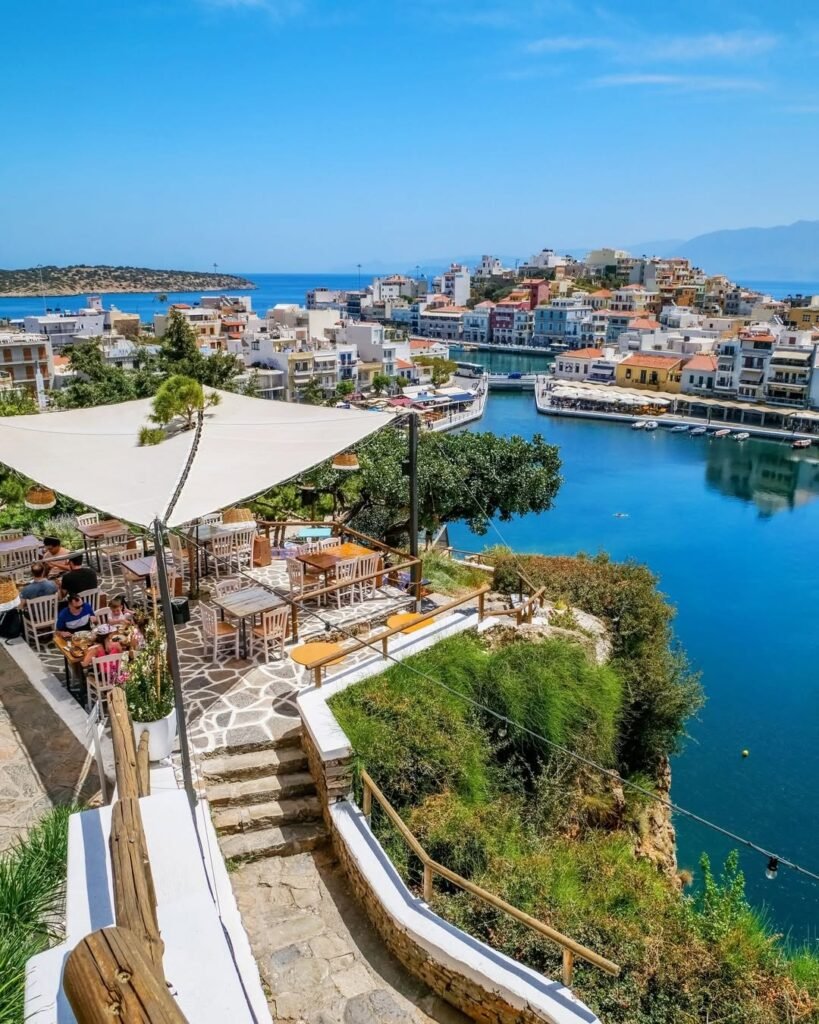
As you continue along the coast, the laid-back town of Sitia makes a perfect mid-journey stop. This authentic coastal settlement offers a glimpse of everyday Cretan life away from major tourist centers. Climb to the Venetian fortress (Kazarma) for panoramic views across the town and sea, or simply enjoy a coffee along the waterfront promenade. Seafood lovers shouldn’t miss the opportunity to sample fresh catches at one of the harbor-front tavernas.
Vai Palm Beach: Europe’s Tropical Paradise
Arriving at Vai Palm Beach feels like discovering a tropical paradise in Europe. Home to the continent’s largest natural palm forest, over 6,000 Phoenix theophrasti palms create a stunning backdrop to golden sands and crystal-clear turquoise waters. These rare palms, endemic to Crete and southwestern Turkey, are protected within a 20-hectare conservation area that creates an exotic setting unlike anything else in Europe.
For those seeking a more secluded experience, Itanos Beach lies just 3 km north of Vai. This quieter alternative actually consists of three distinct beaches with different features: a southern beach with white sand and calm waters, a rocky middle beach perfect for snorkeling, and a longer northern beach with turquoise waters and fine sand. The ruins of ancient Itanos—a once-influential Dorian settlement—are partially visible underwater, creating a unique opportunity for snorkelers to explore sunken history.
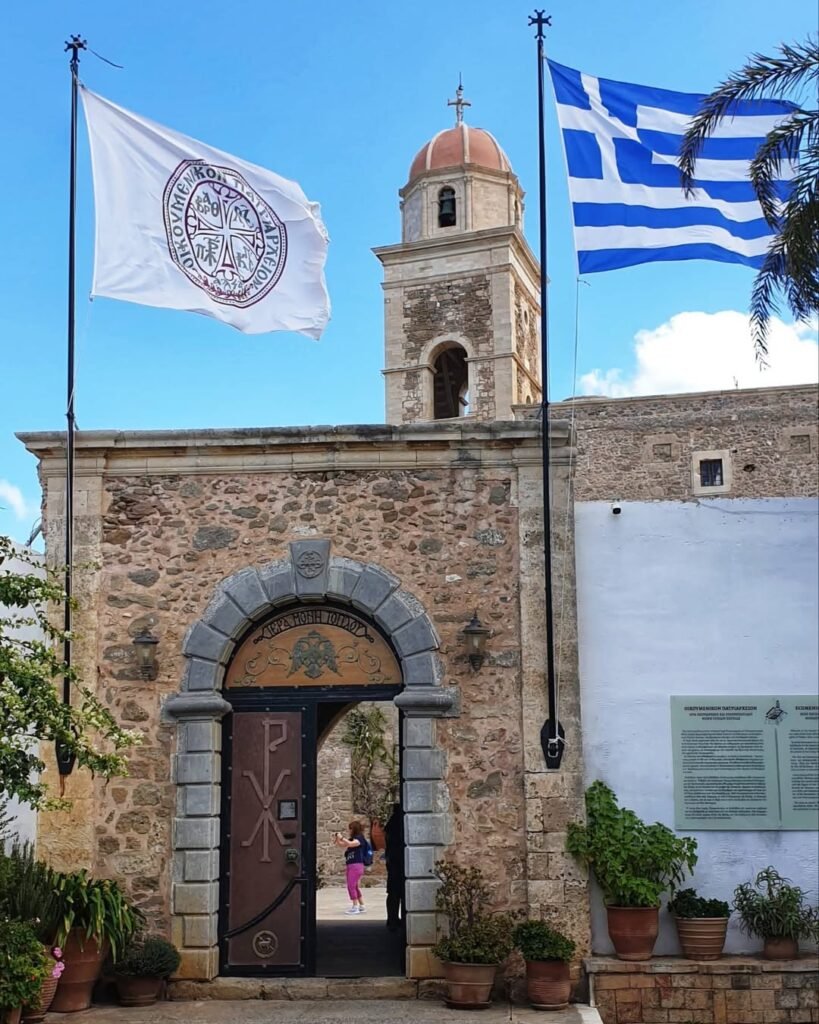
Optional Detours
Toplou Monastery, located 10 km west of Vai, provides a fascinating glimpse into Crete’s religious and cultural heritage. This fortified 15th-century monastery houses impressive religious artifacts, historic manuscripts, and even maintains one of Crete’s oldest wineries, producing excellent wines using traditional methods dating back to the Middle Ages. Consider stopping for a wine tasting session before continuing to Vai.
For nature enthusiasts, Richtis Gorge near Sitia offers a refreshing detour with a 4 km hike (each way) leading to a beautiful 20-meter waterfall surrounded by lush vegetation—perfect for cooling off on hot summer days. The trail begins near Exo Mouliana and takes about 1.5 hours round-trip.
Local Tips
- Timing is everything—visit Vai Beach early morning or late afternoon to avoid crowds and harsh midday sun
- Climb to the lookout point above Vai Beach for spectacular photos of the palm forest meeting the sea
- Pack a picnic as food options at Vai can be limited and relatively expensive
Where to Eat
Vai Restaurant Palm Beach (Vai) Perched above the beach with panoramic views of the palm forest, this restaurant specializes in fresh seafood including excellent tuna steak and traditional kakavia fish soup.
Inodion (Sitia) Just steps from the seafront, Inodion is a family-run taverna renowned for reviving traditional dishes from eastern Crete using fresh, local ingredients and Sitia’s famous extra virgin olive oil. The menu features both forgotten classics and creative new recipes, all served in a warm, welcoming atmosphere that’s beloved by locals and visitors alike.
Driving Time: Around 2 hours one way
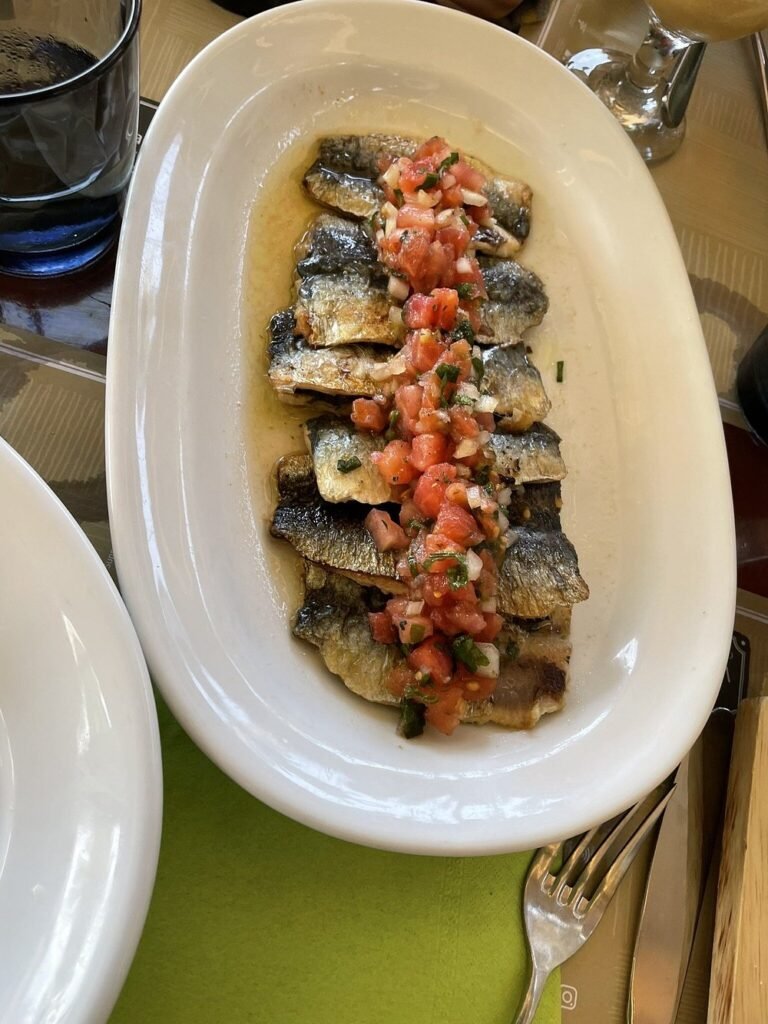
7. Chania to Sfakia via Imbros Gorge (Southwest Mountains)
The dramatic journey from Chania to Sfakia takes you deep into Crete’s untamed southwest, where rugged mountains meet crystal-clear waters through one of the island’s most accessible natural wonders.
Highlights Along the Way
Imbros Gorge offers the perfect introduction to Crete’s dramatic landscape without the crowds or difficulty of the more famous Samaria Gorge. This 8-kilometer trail winds through towering limestone cliffs and lush Mediterranean vegetation, narrowing at the famous “Iron Gates” to just 1.6 meters wide—creating a dramatic backdrop for unforgettable vacation photos.
The hike itself descends about 600 meters in elevation and takes approximately 2-3 hours at a relaxed pace, making it suitable for most fitness levels. As you walk the path, you’re literally stepping through history—this same route served as an escape passage for Allied soldiers during World War II following the Battle of Crete. Watch for remnants of the old mule trail still visible along certain sections.
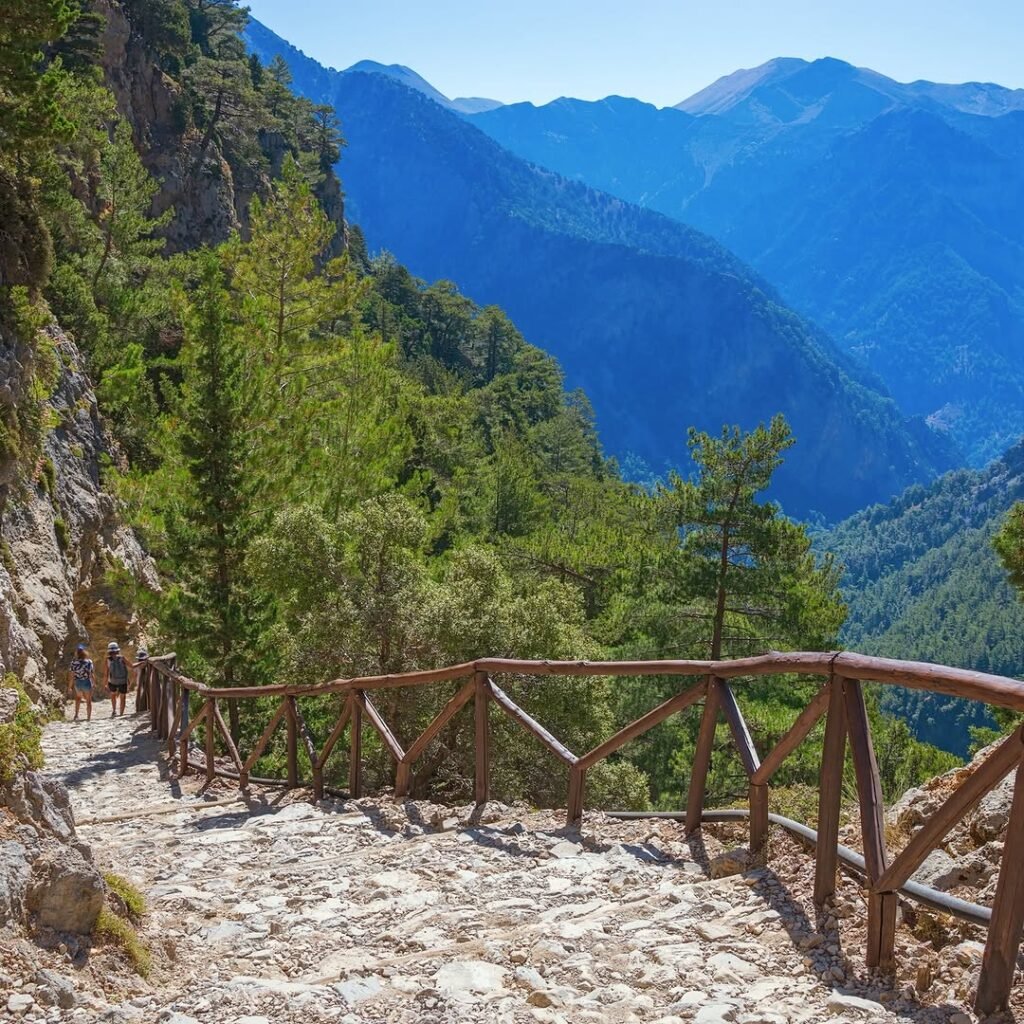
Practical Tips for the Gorge:
- Wear sturdy hiking shoes rather than sandals
- Bring at least 1.5 liters of water per person
- Start early to avoid midday heat
- Best hiked from spring to autumn (the trail is typically closed November to April due to weather risks)
- Arrange transportation back to your car (local taxis are available at the exit)
Chora Sfakion: Where Mountains Meet Sea
After your gorge adventure, the coastal village of Chora Sfakion (often simply called Sfakia) rewards you with authentic Cretan charm. This small harbor settlement nestled between the imposing White Mountains and the Libyan Sea embodies the region’s fierce independent spirit—locals proudly trace their heritage to resistance fighters who defied centuries of foreign occupiers.
Pull up a chair at a seaside taverna and treat yourself to the day’s freshly caught fish or the local delicacy—Sfakian cheese pie drizzled with honey. The simple combination of crispy dough, soft cheese, and sweet honey perfectly represents the uncomplicated authenticity that defines this region.
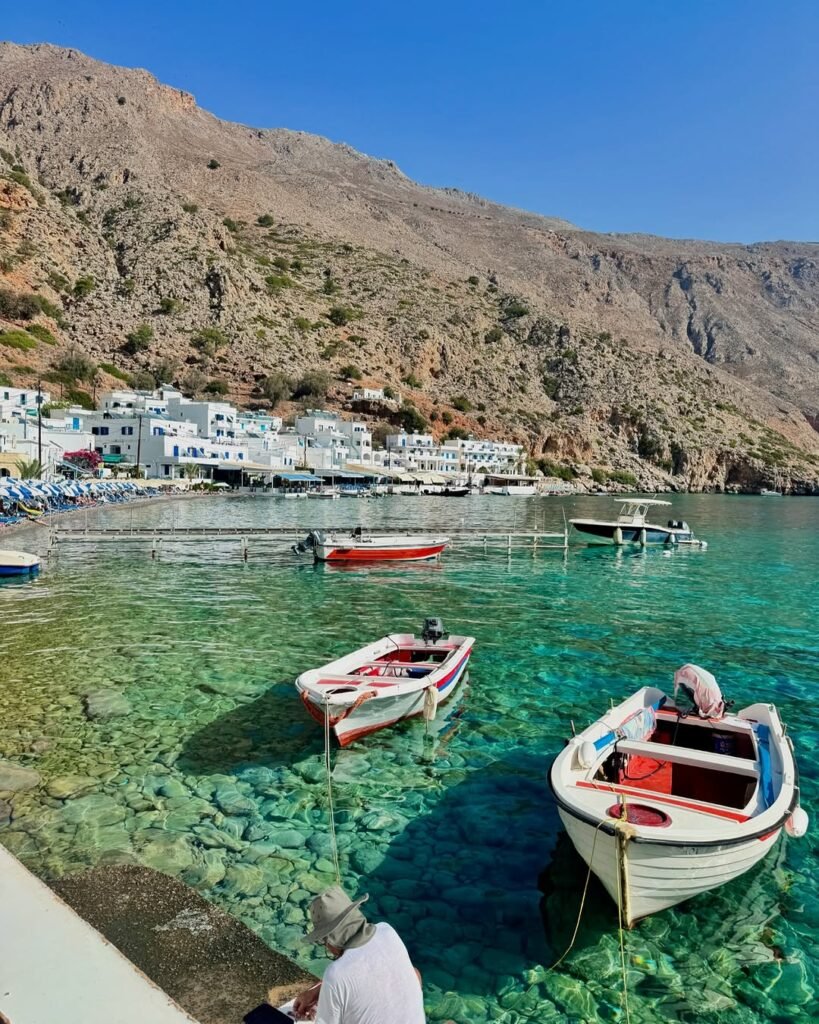
For an extra dose of adventure, hop on a quick ferry to Loutro—a car-free coastal village accessible only by boat or foot. The 20-minute ride (approximately €5) offers stunning views of Crete’s southern coastline, and Loutro’s pristine blue waters and whitewashed buildings create a postcard-perfect setting for swimming and relaxation.
Local Tips
- Visit Glyka Nera (Sweetwater Beach)—a beautiful secluded beach reachable by boat from Sfakia or adventurous hikers
- Try local specialties like staka (a traditional Cretan dairy product made from sheep or goat’s milk) or apaki (smoked pork)
- Keep an eye out for wild goats perched impossibly on steep cliffs throughout the region
- Rent snorkeling equipment in Loutro or Sfakia to explore the crystal-clear waters (water shoes recommended for the rocky beaches)
Where to Eat
Taverna Nikos (Chora Sfakion) This harbor-front establishment serves exceptional fresh seafood alongside Cretan specialties. Their Sfakian pie is considered among the best in the region, and complimentary garlic bread and raki add to the authentic experience.
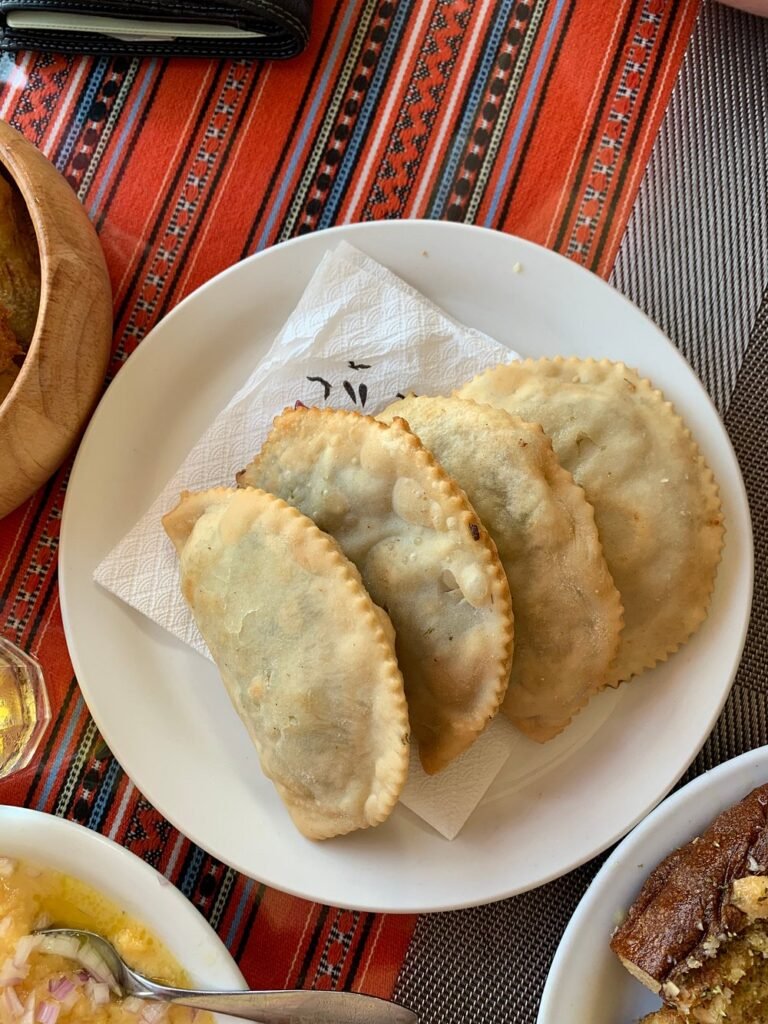
Taverna Komitades (Komitades) Perfectly positioned near the exit of Imbros Gorge, this friendly taverna is a favorite stop for hikers looking to refuel after their trek. Enjoy classic Cretan dishes, fresh salads, and cold drinks on a terrace with beautiful mountain views—a peaceful spot to relax and reflect on your gorge adventure.
Driving Time: 1.5 hours from Chania to Imbros Gorge; additional 22-23 minutes (15 km) from Imbros to Sfakia
Conclusion
Crete’s roads offer an unmatched blend of adventure and discovery, weaving through millennia of history and jaw-dropping landscapes that change dramatically with each new route. From the pink sands of Elafonissi to the ancient wonders of Phaistos, from the tropical paradise of Vai’s palm forest to the untamed gorges of the southwest, your Cretan road trip becomes more than transportation—it transforms into the heart of your island experience. For the best journey, consider visiting from March to the end of May or from late September through October when you’ll enjoy perfect weather, warm seas, and noticeably thinner crowds while navigating those charming mountain passes in a compact car like a Fiat Panda.
Embrace the local “siga siga” (slowly slowly) philosophy as you drive—Crete isn’t a destination to rush through, but rather one where the journey itself, with its unexpected wildlife encounters, friendly village tavernas, and breathtaking viewpoints, becomes one of your most treasured travel memories. Kalo taxidi—have a good journey!
Further Reading:
